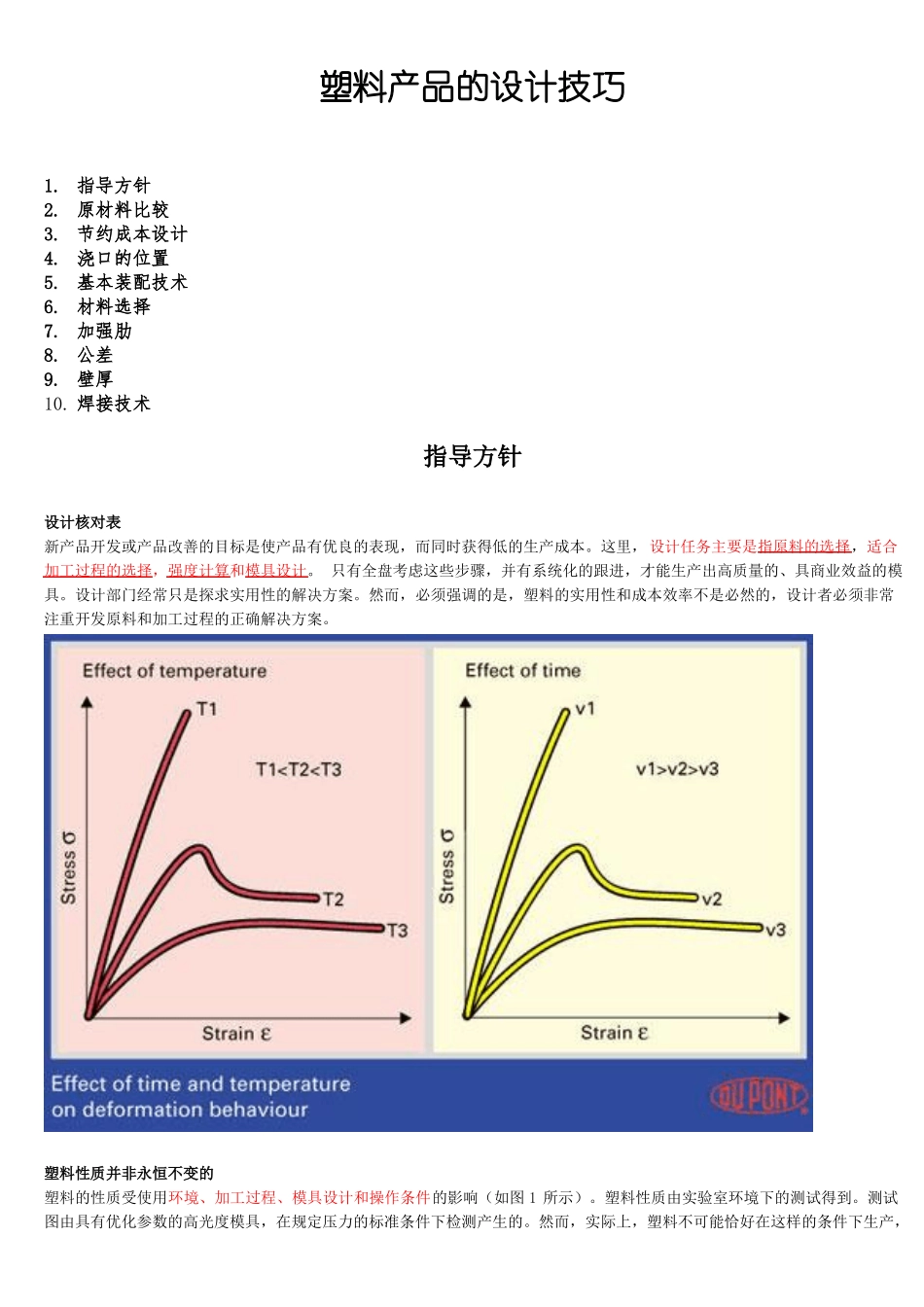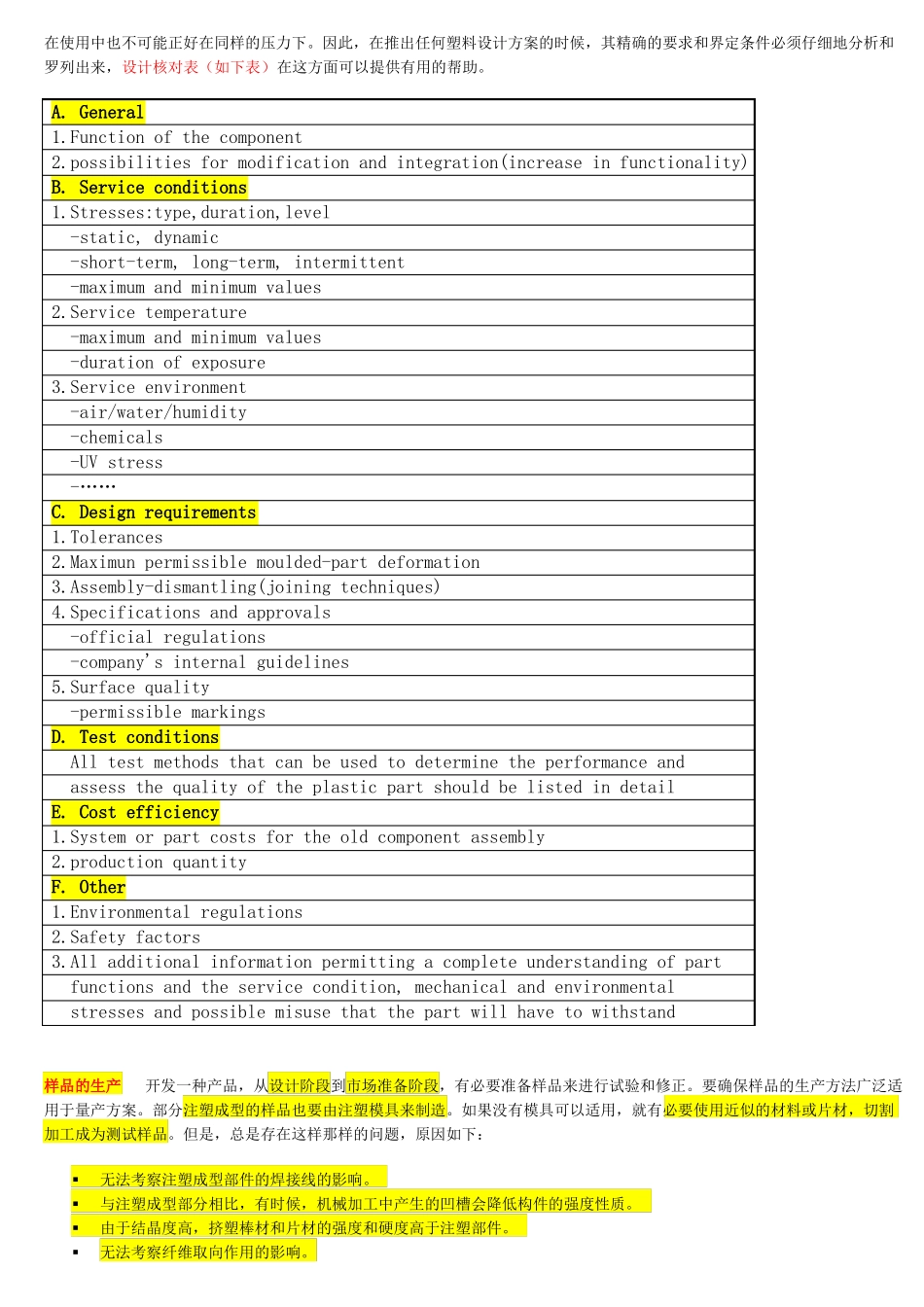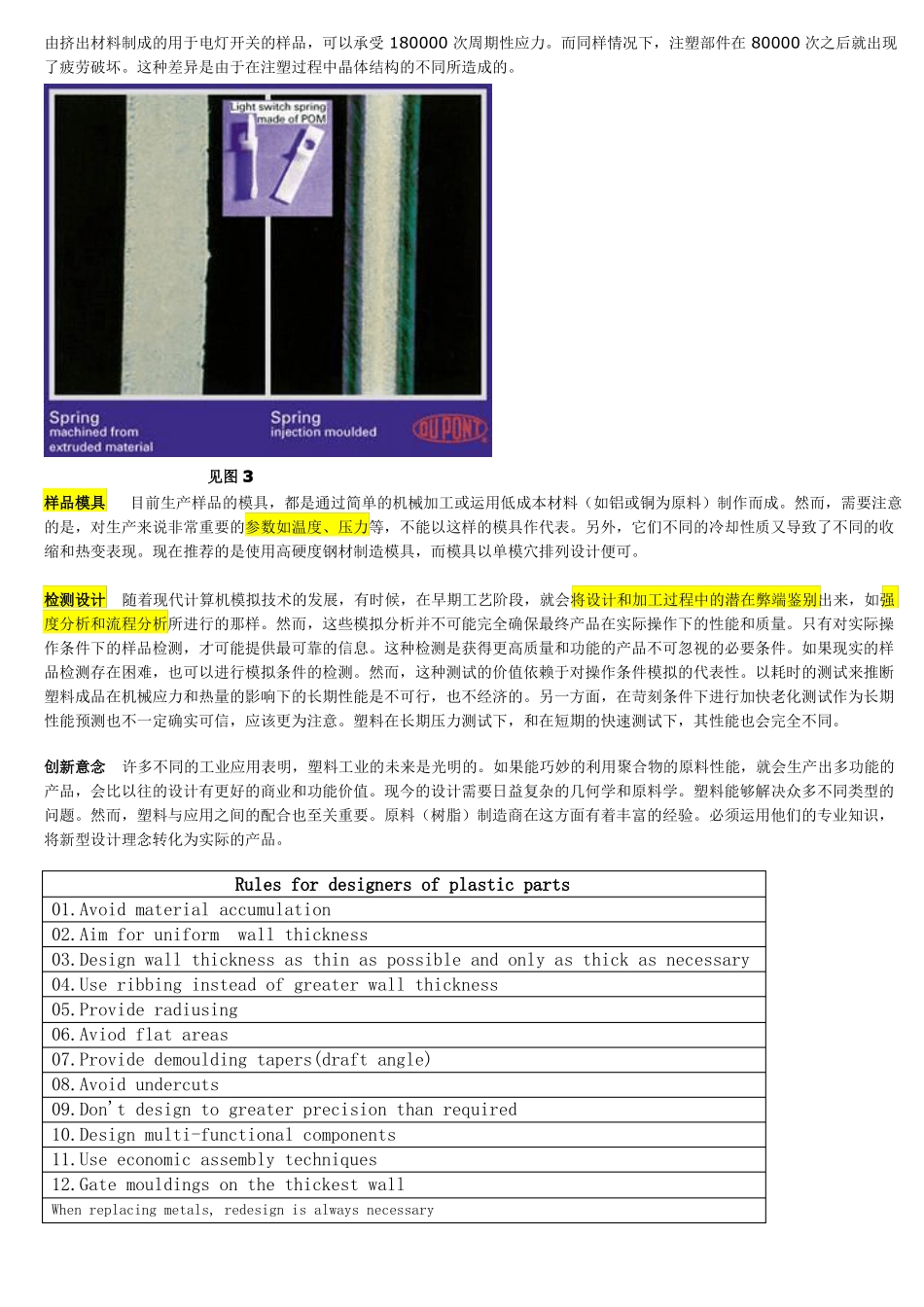塑料产品的设计技巧1. 指导方针2. 原材料比较3. 节约成本设计4. 浇口的位置5. 基本装配技术6. 材料选择7. 加强肋8. 公差9. 壁厚10. 焊接技术指导方针设计核对表新产品开发或产品改善的目标是使产品有优良的表现,而同时获得低的生产成本。这里, 设计任务主要是指原料的选择,适合加工过程的选择,强度计算和模具设计。 只有全盘考虑这些步骤,并有系统化的跟进,才能生产出高质量的、具商业效益的模具。设计部门经常只是探求实用性的解决方案。然而,必须强调的是,塑料的实用性和成本效率不是必然的,设计者必须非常注重开发原料和加工过程的正确解决方案。塑料性质并非永恒不变的塑料的性质受使用环境、加工过程、模具设计和操作条件的影响(如图 1 所示)。塑料性质由实验室环境下的测试得到。测试图由具有优化参数的高光度模具,在规定压力的标准条件下检测产生的。然而,实际上,塑料不可能恰好在这样的条件下生产,在使用中也不可能正好在同样的压力下。因此,在推出任何塑料设计方案的时候,其精确的要求和界定条件必须仔细地分析和罗列出来,设计核对表(如下表)在这方面可以提供有用的帮助。A. General1.Function of the component2.possibilities for modification and integration(increase in functionality)B. Service conditions1.Stresses:type,duration,level -static, dynamic -short-term, long-term, intermittent -maximum and minimum values2.Service temperature -maximum and minimum values -duration of exposure3.Service environment -air/water/humidity -chemicals -UV stress -……C. Design requirements1.Tolerances2.Maximun permissible moulded-part deformation3.Assembly-dismantling(joining techniques)4.Specifications and approvals -official regulations -company's internal guidelines5.Surface quality -permissible markingsD. Test conditions All test methods that can be used to determine the performance and assess the quality of the plastic part should be listed in detailE. Cost efficiency1.System or part costs for the old component assembly2.production quantityF. Other1.Environmental regulations2.Safety factors3.All additional information permi...


